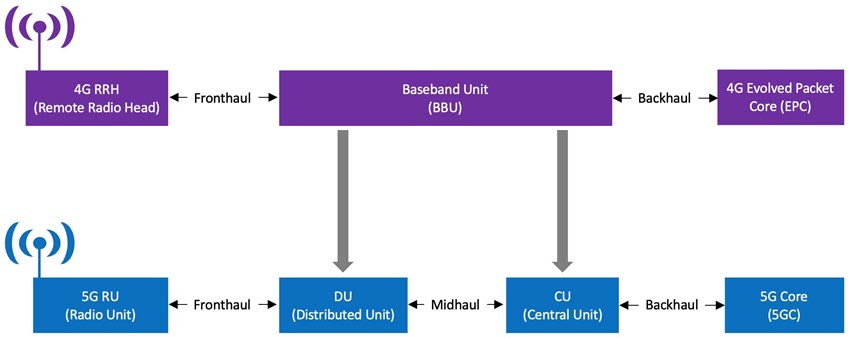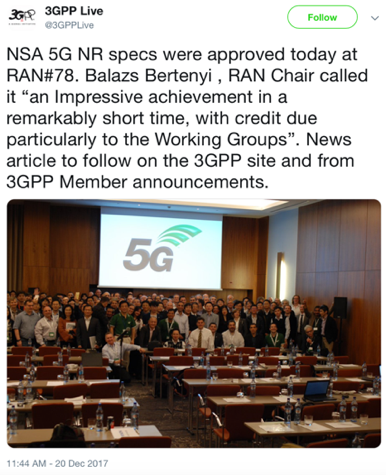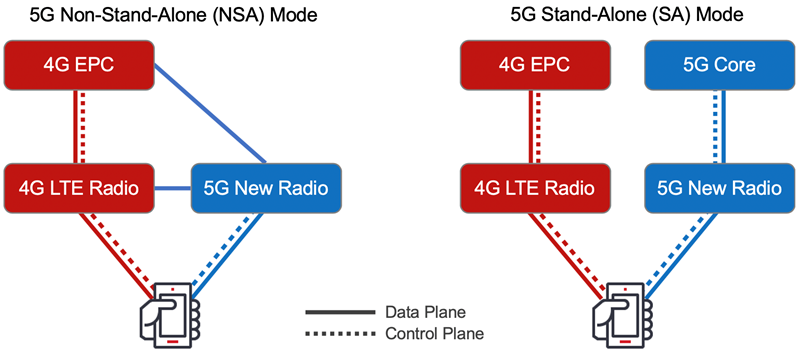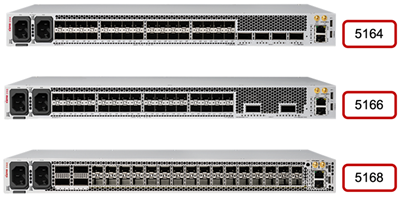Spotlight on 4G/5G backhaul networks
View the entire 5G xHaul Series:
Remind me again, what’s xHaul?
xHaul refers to fronthaul, midhaul, and backhaul transport networks that interconnect cell sites to each other, to mobile core networks, and ultimately to data centers, where accessed end-user data and content is hosted. 5G will support three main categories of 5G use-cases, facilitated by network slicing, each with its own network performance requirements as mobile services traverse fronthaul, midhaul, and you guessed it, backhaul networks.
- enhanced Mobile Broadband (eMBB), which requires significant wireline capacity increases
- massive Machine-Type Communications (mMTC), which requires analytics-driven automation to optimally connect millions to billions of machines (think massive IoT)
- ultra-reliable Low-Latency Communications (urLLC), which requires Multi-access Edge Computing (MEC) and deterministic packet-optical transport to achieve extremely low and deterministic latency performance
Network operators, mobile and wholesalers alike, must be able to guarantee each network slice’s performance over its entire lifecycle. In the wireline domain, this means specific traffic management capabilities are required in the fronthaul, midhaul, and backhaul networks that go well beyond simply increasing capacity to properly support 5G services. In the backhaul, where latency requirements are less stringent compared to fronthaul and midhaul networks, capacity will be a key performance upgrade, moving from a typical 1GbE for 4G today to 10GbE, and even higher, for 5G.
In the backhaul, where latency requirements are less stringent compared to fronthaul and midhaul networks, capacity will be a key performance upgrade, moving from a typical 1GbE for 4G today to 10GbE, and even higher, for 5G.
Remind me again, where’s xHaul?
In 4G, fronthaul networks connect Remote Radio Heads (RRHs) to distant centralized/cloud Baseband Units (BBUs), while backhaul connects BBUs back to the 4G Evolved Packet Core (EPC). In 5G, the New Radios (NRs) are connected to BBUs, which will be disaggregated and virtualized into Centralized Units (CUs) and Distributed Units (DUs). The backhaul network, where MNOs are currently focused on to deliver new 5G eMBB services, is similar to 4G backhaul, albeit carrying much more traffic due to the higher performance and higher bandwidth provided by 5G NRs.

Figure 1: Evolution from 4G to 5G xHaul networks
Backhaul is provided by 1GbE, 10GbE, and 100GbE interfaces as well as newer 25GbE, 50GbE, and possibly even 400GbE interfaces at the extreme end. Distances are typically less than hundred to a few hundred kilometers with longer distances served by DWDM optics, coherent and non-coherent, commonly in pluggable form-factors.
Backhaul latency requirements, typically from 10ms to 300ms, is far less stringent than fronthaul and even midhaul networks. The backhaul network is commonly Ethernet-based (carrying IP payloads) but can also be dark fiber, microwave-based wireless, or newer Integrated Access Backhaul (IAB), when access to optical fiber is unavailable or uneconomical. Each backhaul technology has its merits and its place, meaning a mix of all will be used for 5G.
5G Non-Stand-Alone (NSA) and 5G Stand-Alone (SA) Mode
 Back in December 2017, the 3GPP group approved the 5G NR specifications, which was a major milestone that started the race towards 5G. It allowed the industry to rollout standards-based 5G NRs, as soon as they became available, allowing MNOs to test their wireless performance and standards compliance, perform Radio Frequency (RF) modeling and planning, and ultimately physically deploy them atop towers, masts, buildings, and elsewhere.
Back in December 2017, the 3GPP group approved the 5G NR specifications, which was a major milestone that started the race towards 5G. It allowed the industry to rollout standards-based 5G NRs, as soon as they became available, allowing MNOs to test their wireless performance and standards compliance, perform Radio Frequency (RF) modeling and planning, and ultimately physically deploy them atop towers, masts, buildings, and elsewhere.
5G NRs are primarily being connected to existing 4G EPC networks providing end-users, humans and machines, with new 5G performance over the wireless domain, but over the wireline network domain it’s still 4G performance. This configuration is referred to as 5G Non-Standard-Alone (NSA) and is what most 5G end-users today experience. The result is “pre-5G” or “partial 5G” and is an ingenious way to accelerate 5G NR deployments while 5G Core and xHaul networks are steadily upgraded as 3GPP Release-16, recently approved, and Release-17 facilitate the commercialization wide-scale rollout of standards-based technology.
5G NSA mode is initially targeted towards eMBB use-cases, primarily video-centric, which will consume almost 76% of all traffic by 2025, as per the latest Ericsson Mobility Report. However, 5G NSA does not include Network Slicing capabilities, a 5G Quality of Service (QoS) framework, or offer ultra-low latency. In other words, eMBB today is like 4G, albeit on steroids, and is what most consumers will experience until the core wireline network is also updated.
5G SA, also referred to as “full 5G”, is when 5G NRs are connected to a 5G Core network, which replaces the current 4G EPC used in 5G NSA and provides the end-to-end performance to deliver the full promise of 5G. This will be enabled by Network Slicing over the wireless and wireline domains and the 5G QoS framework enabling urLLC and mMTC category of 5G use-cases. Commercially available 5G SA services have already been announced by major MNOs. Widely available full 5G performance to the masses is likely to be a multi-year journey that’s unique for each MNO due to unique starting points and end points, which are based on different business objectives.

Figure 2: 5G Non-Stand-Alone (NSA) vs. 5G Stand-Alone (SA) Modes
The primary impact on 5G NSA on backhaul networks is increased capacity, as one 5G end-user can generate up to 10 times the bandwidth than a comparable 4G LTE end-user. In other words, one 5G smartphone can conceivably consume as much wireless capacity 10 or more 4G LTE smartphones. Of course, the actual impact of each 5G end-user will ultimately depend on a variety of real-world factors, such as the smartphone performance itself, wireless spectrum range being used, MNO provided performance, and other factors – but you can see where we’re heading.
One 5G smartphone can conceivably consume as much wireless capacity 10 or more 4G LTE smartphones
The importance of wholesale network operators
Although most of the attention related to 5G is related to MNOs, and for good reason as this is who we buy mobile services from, let’s not forget the impact of 5G on wholesale network operators who provide connectivity to cell sites, from the many flavors of small to macro, to MNOs who don’t have wireline access to their cell sites.
Wholesale backhaul services is quite common, especially in North America, meaning wholesale operators must also upgrade their networks to deliver the required 5G performance (ex. latency, capacity, timing & synchronization) to their MNO customers, which they’re already doing. Given 5G introduces open, standards-based fronthaul and midhaul networks, wholesale operators can expand their connectivity service portfolios from today’s backhaul to these network areas as well.
Ciena’s new 5G Router portfolio
 Open, standards-based xHaul transport networks will allow mobile and wholesale operators alike to converge 4G/5G C-RAN and D-RAN traffic onto common wireline infrastructure resulting in converged xHaul networks that are simpler and more cost-effective to own and operate. This is exactly what we had in mind when we designed our new 5164, 5166, and 5168 network slicing routers. They are all based on Adaptive IPTM, a different and better way to build standards-based IP networks from access to metro that’s automated, open, and lean.
Open, standards-based xHaul transport networks will allow mobile and wholesale operators alike to converge 4G/5G C-RAN and D-RAN traffic onto common wireline infrastructure resulting in converged xHaul networks that are simpler and more cost-effective to own and operate. This is exactly what we had in mind when we designed our new 5164, 5166, and 5168 network slicing routers. They are all based on Adaptive IPTM, a different and better way to build standards-based IP networks from access to metro that’s automated, open, and lean.
Converged 4G and 5G xHaul networking is where the market is headed and is what Ciena is facilitating.











